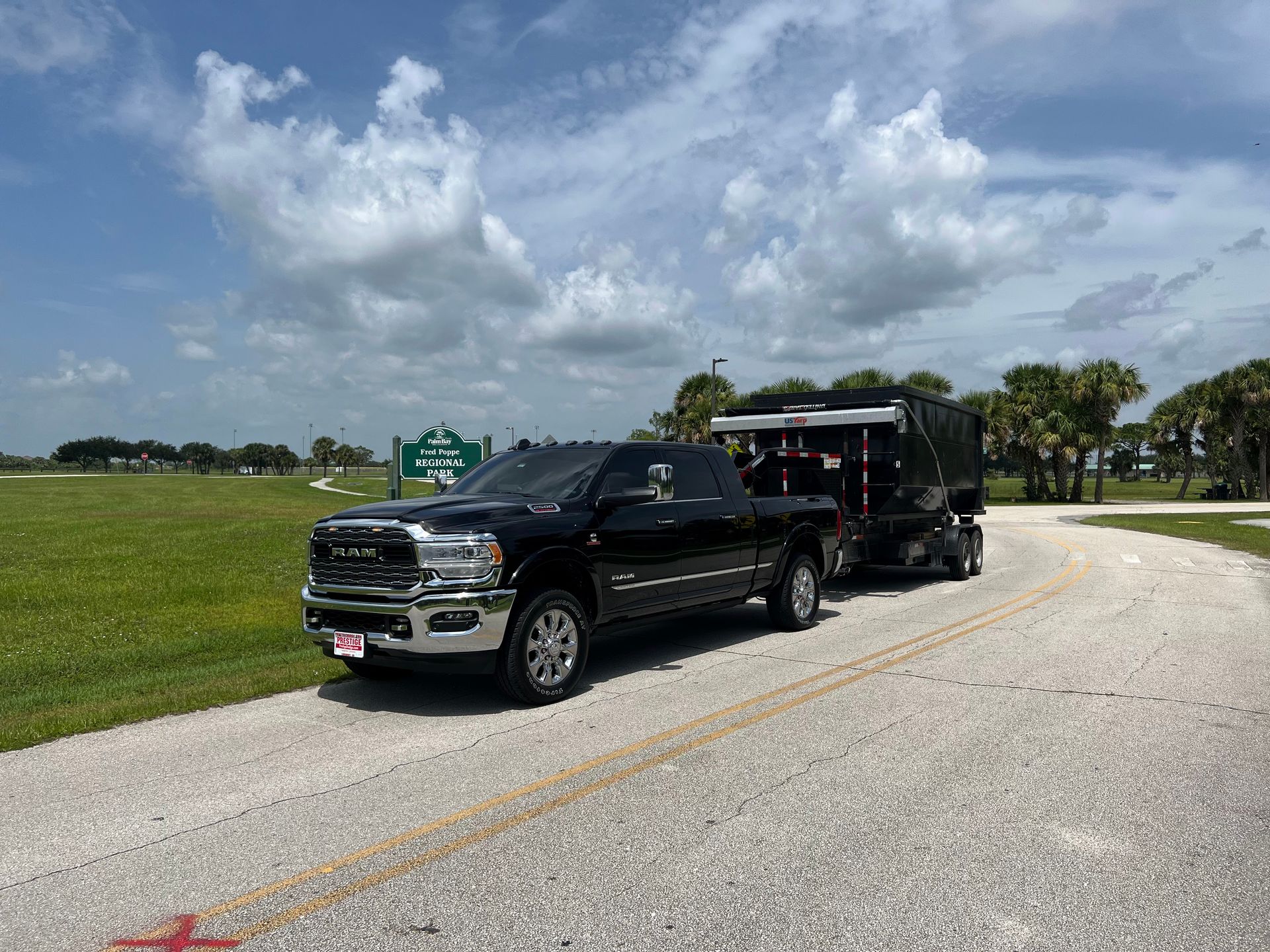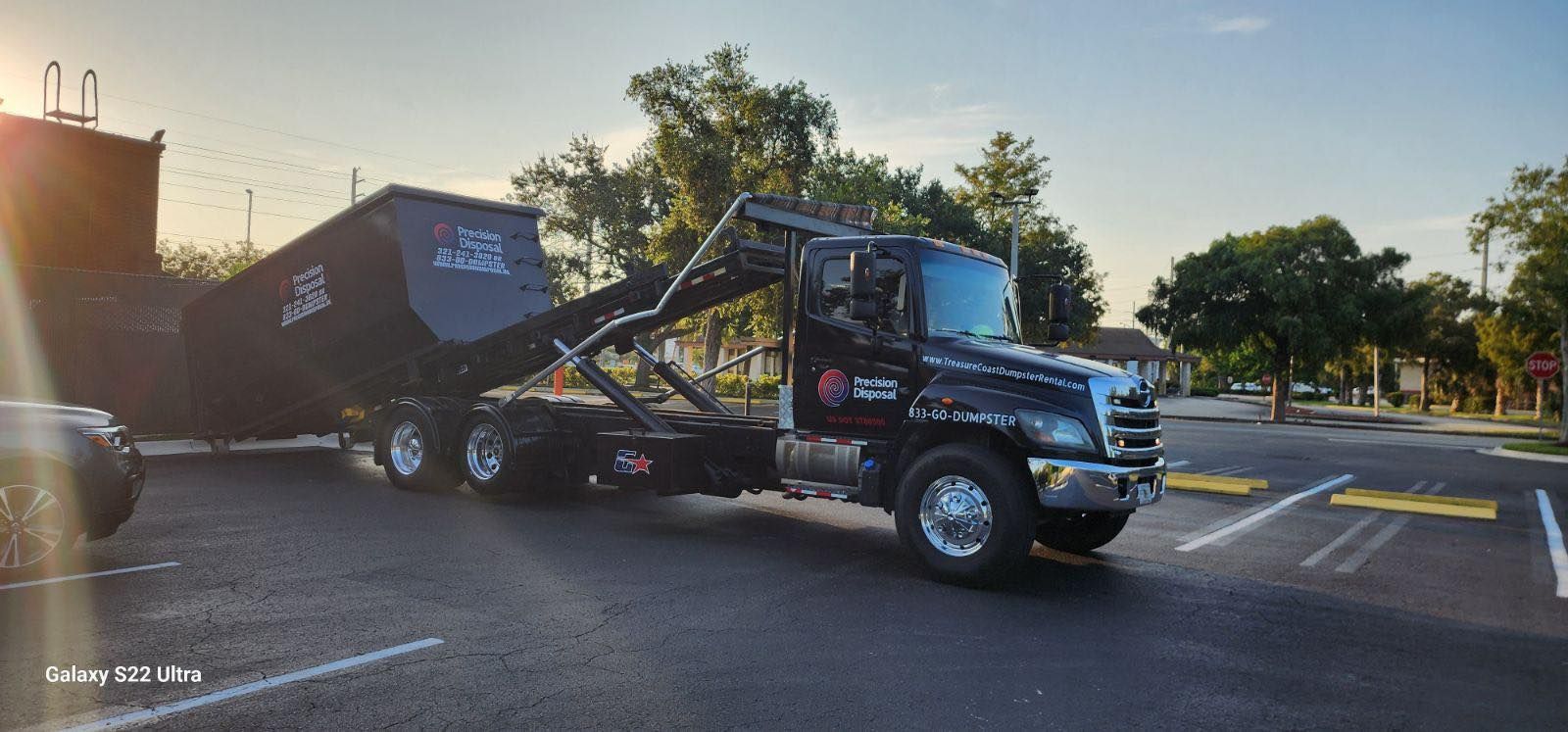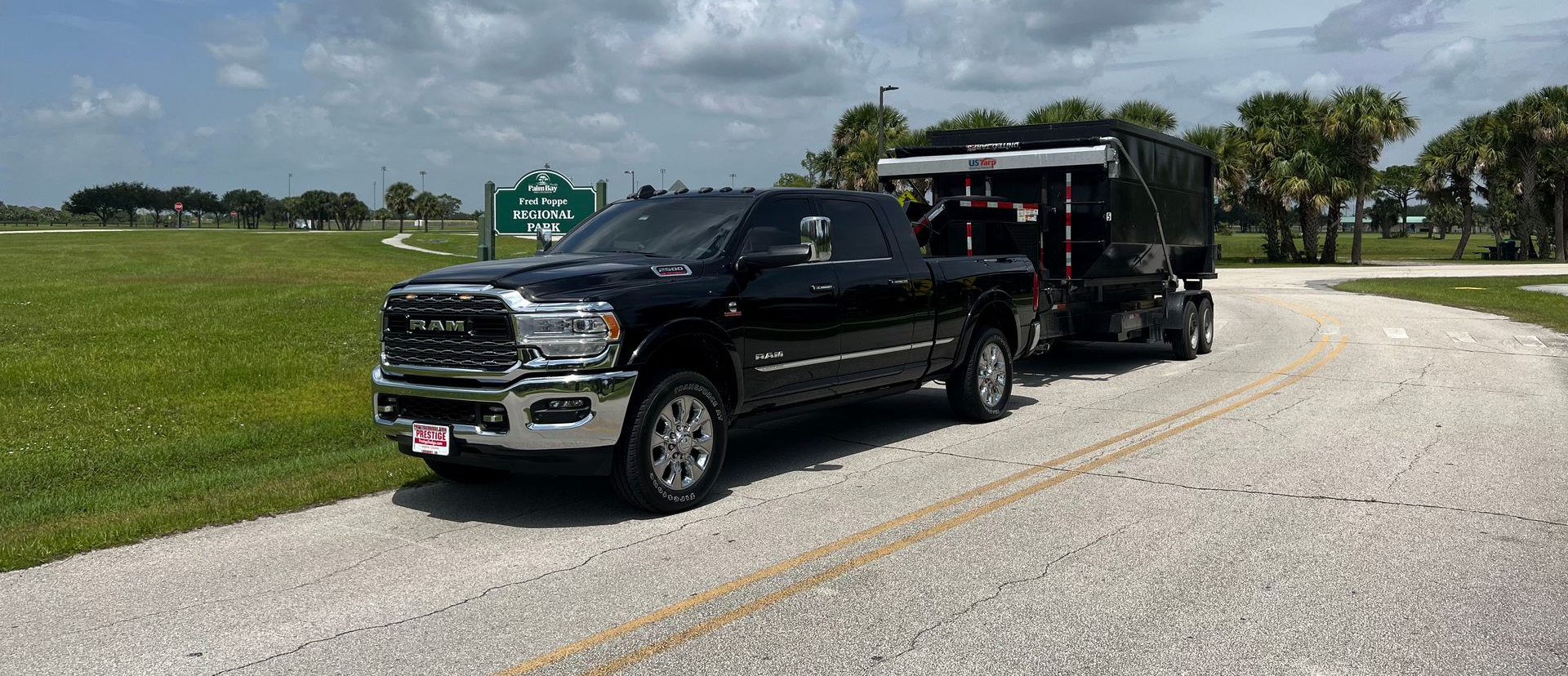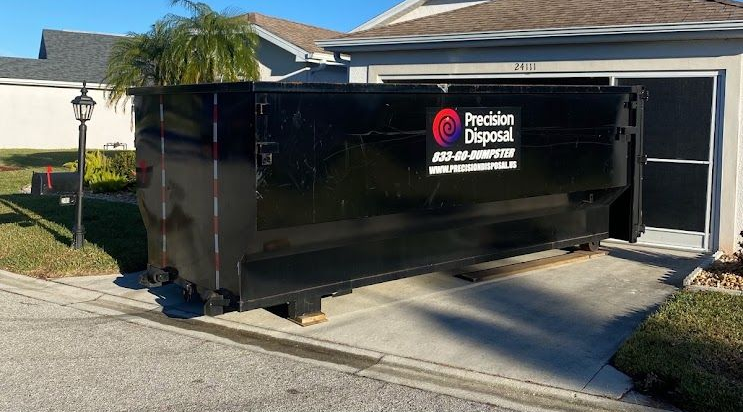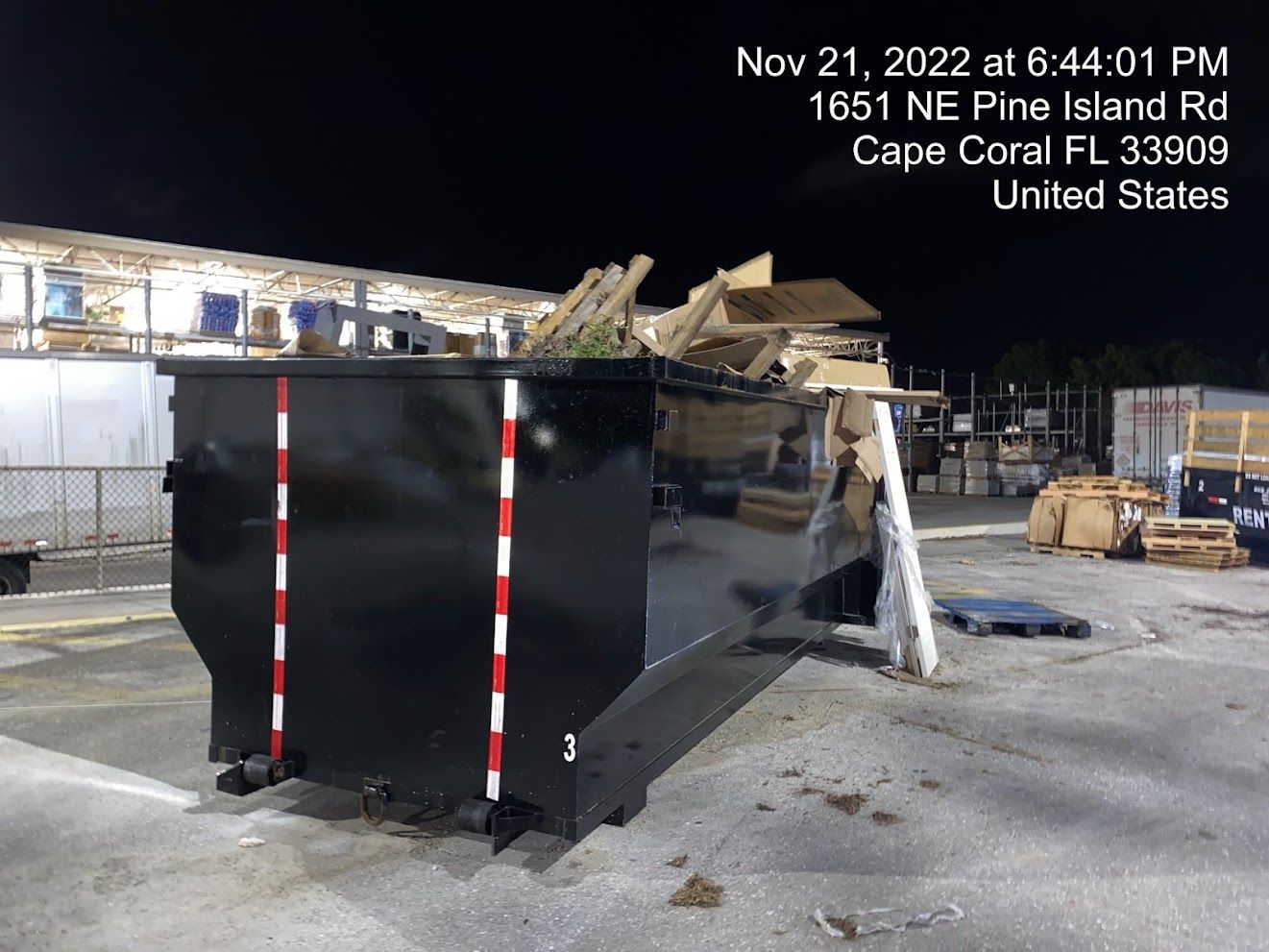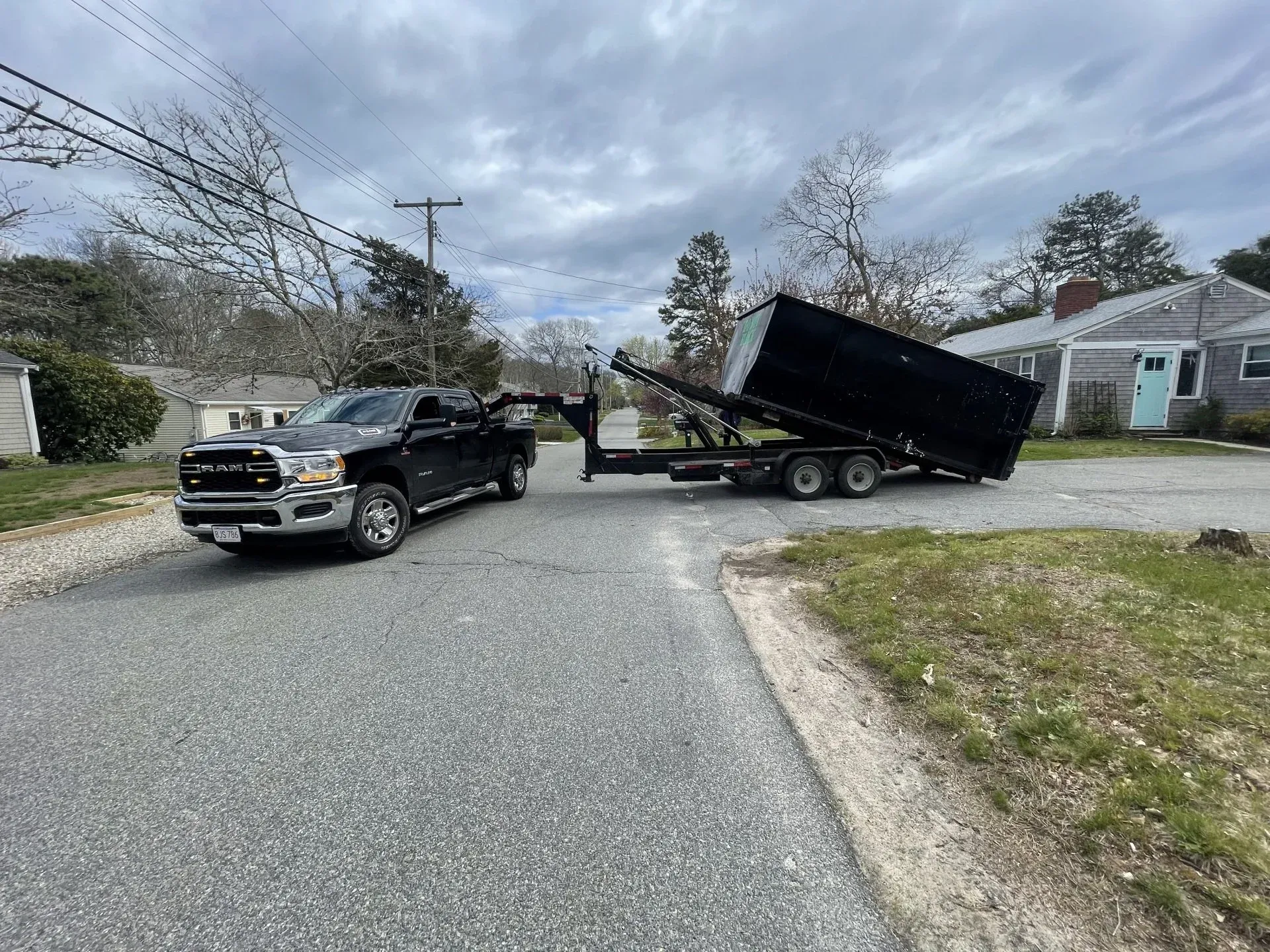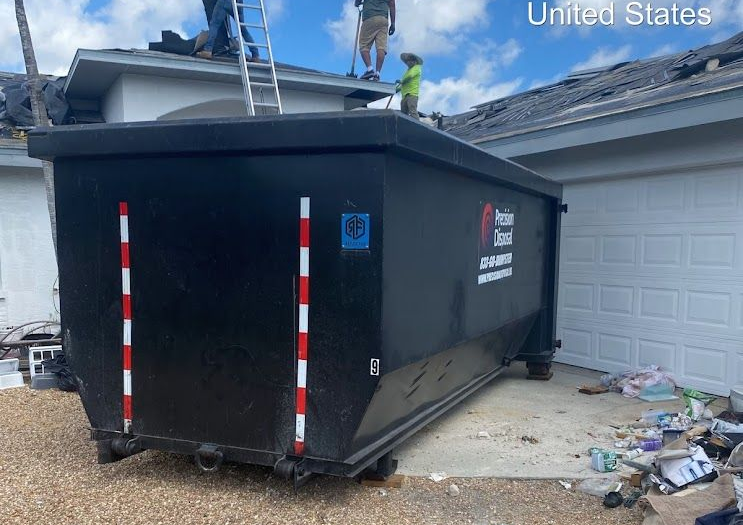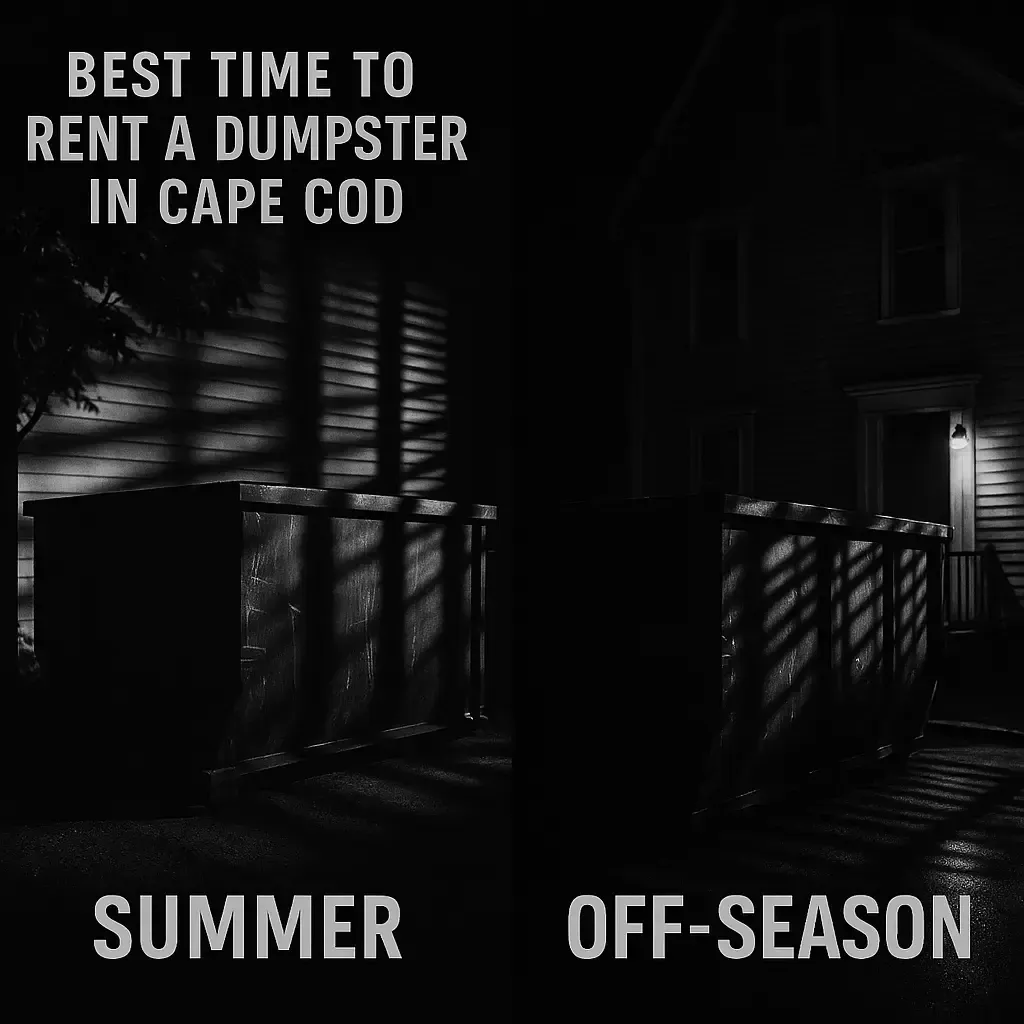Roll Off Dumpster for Your Fort Myers Project
Dumpster selection affects timeline, cost and safety for your Fort Myers job, so you should weigh project scope, driveway access and local rules; choose a 10-yard for small cleanouts to save money (cost savings) or a 20-yard for renovations needing space for bulky debris, but avoid overfilling or exceeding weight limits which can cause fines or tipping; check permit and placement rules and match dumpster capacity to your materials to keep your project efficient and safe.
Key Takeaways:
- 10-yard dumpsters suit small projects (garage cleanouts, single-room remodels) and fit most driveways with a lower rental cost.
- 20-yard dumpsters work better for medium projects (kitchen remodels, siding/roofing debris) and offer better cost-per-cubic-yard for larger loads.
- Site access and placement: 10-yard units fit tighter spaces; 20-yard units require more clearance and a stable surface to avoid driveway damage.
- Weight limits matter—heavy materials (such as concrete, soil, and tile) can quickly exceed tonnage caps; consider using specialized containers or paying overweight fees.
- Check Fort Myers permits, HOA rules, and local disposal/recycling policies before ordering; confirm pickup/drop-off logistics with your hauler.
The Dimensions That Matter: A Comparative Analysis
| 10-Yard | 20-Yard |
|---|---|
| Cubic Yards: 10 cu yd | Cubic Yards: 20 cu yd |
| Typical Dimensions: ~12' L × 8' W × 3.5' H | Typical Dimensions: ~22' L × 8' W × 4.5' H |
| Approx. Pickup Loads: 3–4 truckloads | Approx. Pickup Loads: 6–8 truckloads |
| Common Weight Allowance: typically 2–3 tons (varies by hauler) | Common Weight Allowance: typically 4–6 tons (varies by hauler) |
| Best For: small renovations, single-room gut-outs, garage/attic cleanouts | Best For: medium remodels, whole-kitchen demo, small roof tear-offs (~1,200–1,800 sq ft) |
Breaking Down Size: 10-Yard vs. 20-Yard
Choose the 10-yard option when you have compact debris piles, such as a bathroom gut (including vanity, tile, and fixtures) or a garage purge that produces about 10 cubic yards or less. The footprint, roughly 12 feet long, keeps the dumpster off busy driveways and in tighter urban or suburban spots; this footprint often avoids permits and minimizes impact on pavers in Fort Myers driveways.
Opt for the 20-yard if your demo includes cabinets, flooring, and appliances from a kitchen or a modest roofing tear-off. Expect approximately 22 feet in length, which requires more clear driveway space and may trigger a temporary permit or HOA notice. Weight matters too: bulky materials like concrete, tile, or sod can quickly exceed the 20-yard allowance, so it's essential to estimate material weight before loading to avoid overage fees.
Ideal Use Cases: Which Size Fits Your Project?
For single-room remodels, small cleanouts, or replacing a few windows, you will usually be fine with a 10-yard — it handles about 3–4 pickup loads and keeps costs lower. Projects generating heavier, denser debris, such as tile, porcelain, or compacted yard waste, encourage you to opt for a 20-yard dumpster so you don't exceed the weight cap early; roofing jobs around 1,200–1,800 sq ft typically require a 20-yard dumpster.
Landscape jobs that include palm fronds or sod can spike volume without matching weight, so choosing a 20-yard gives you volume room while avoiding multiple hauls. Conversely, bulky but lightweight materials like insulation might look large but still fit comfortably in a 10-yard container if the total cubic yards stay below ten.
Assess your project by listing major debris types and estimating both volume and weight. Count cabinets/appliances, estimate shingle bundles (a typical roof tear-off equals roughly one bundle per 33 sq ft), and factor in dense materials that consume weight allowance. If you predict mixed heavy and bulky waste, you will often save money and hassle by sizing up to a 20-yard rather than risk overweight penalties or a second trip.
Cost Considerations: Budgeting for Your Dumpster
Size, rental duration, and the type of debris you haul will primarily determine the expense. In Fort Myers, a 10-yard roll-off typically falls in the $250–$450 range for a standard 7-day rental, while a 20-yard roll-off commonly runs $350–$650; those numbers jump if you need extra days, expedited delivery, or a same-week pickup. Weight allowances typically cover 1–3 tons, depending on the provider and dumpster size, so plan accordingly for the expected weight of materials such as concrete, dirt, or roofing shingles, which can quickly add to the cost.
You can control costs by matching the dumpster size to the project scope: a 10-yard Fort Myers dumpster suits small remodels or yard cleanups, whereas a 20-yard dumpster handles larger gut-outs or whole-room clear-outs, reducing the risk of overage fees from multiple hauls. Ask providers for a written estimate that lists the base rate, included tonnage, and per-ton overage so you can compare true out-the-door prices rather than advertised base rates alone.
Rental Rates: What to Expect in Fort Myers
Local market rates reflect regional disposal costs and demand peaks during hurricane season or spring renovation months. Typical pricing you'll see from Fort Myers haulers: 10-yard, $250–$450; 15-yard, $300–$550; and 20-yard, $350–$650 for a 5–7 day rental. Adding extra days usually runs $10–$25 per day. Commercial projects or construction sites often secure lower per-day rates by negotiating multi-dump contracts or longer rental windows. Seasonality affects availability and surcharges: during periods of heavy storm cleanup or coastal restoration, expect rates to increase by 10–30% and longer lead times for delivery. Obtain a firm quote that specifies pickup/drop-off windows, fuel surcharges, and whether sales tax or environmental disposal fees are already included, so your budget doesn't get surprised on invoice day.
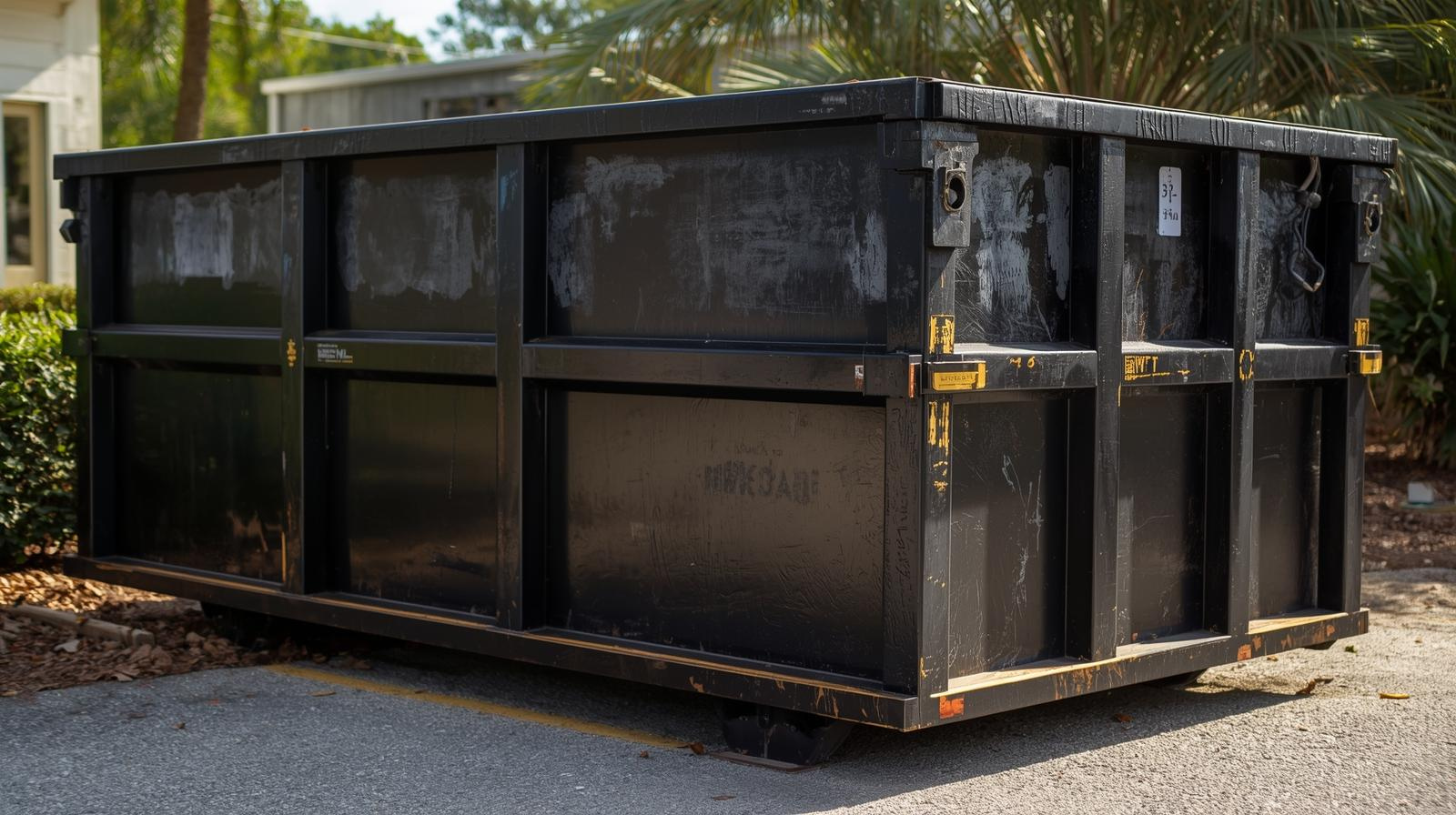
Load Capacity Secrets: How Much Can You Really Fit?
Volume and weight rarely match up: a 10-yard dumpster roughly equals 10 cubic yards and a 20-yard dumpster about 20 cubic yards, but those numbers only tell half the story. Light materials like cardboard, drywall, and household junk let you approach full volume without hitting the scale, while dense loads — concrete (~4,000 lb/yd³), gravel (~2,800 lb/yd³), or wet soil (~2,200 lb/yd³) — will hit weight limits long before you run out of room. For typical home cleanouts, you can usually fill a 10-yard dumpster and expect the weight to remain manageable; for demo work that produces several cubic yards of masonry, a 20-yard dumpster may still exceed the safe hauling capacity.
Practical examples help: demolishing a small concrete driveway section that yields five cubic yards of broken slab would weigh around ~20,000 pounds, a load most 10- and 20-yard rentals cannot accept without special permits or heavy-haul containers. You should estimate material densities against the dumpster's allowed tonnage before ordering to avoid paying steep overage fees or having your pickup refused.
Weight Limits Explained: 10-Yard vs. 20-Yard
Local providers commonly assign a tonnage allowance rather than a strict weight limit per cubic yard. For many Fort Myers rentals, a 10-yard dumpster typically comes with approximately 1–2 tons (2,000–4,000 lbs) included, while a 20-yard dumpster usually contains 2–4 tons (4,000–8,000 kg); exact figures vary by company. Overage charges often range from $50 to $150 per additional 1,000 pounds, so a few hundred pounds of heavy debris can significantly increase the cost of the upgrade.
Service examples illustrate the difference: you can typically load a 20-yard container with a mix of household and construction waste up to its tonnage allowance without issue, but adding dense materials, such as a pickup load of broken concrete, will consume most of that allowance in one go. Ask providers for the included tonnage, the per-ton overage rate, and whether heavy-item surcharges apply for items such as appliances, tires, or mattresses.
Common Missteps: The Risks of Overloading
Overloading leads to immediate consequences: haulers may refuse pickup, charge steep overage fees, or require you to remove excess material yourself. Safety risks include damage to the truck or dumpster axles and an increased chance of tipping during transport. Municipal fines may be possible if an overweight load damages streets or driveways. Reports from local jobs show contractors who overloaded small dumpsters with brick or soil often faced both a refused haul and a $300–$1,000 penalty once weighed at the transfer station.
Practical avoidance strategies include separating heavy debris into a dedicated heavy-haul container, taking masonry to a local recycling yard by the ton, or pre-weighing a small sample to project total weight. For instance, if a patio tear-out produces 3–4 cubic yards of concrete (~12,000–16,000 lbs), you'll save time and money by ordering a container rated for heavy materials rather than risking costly overage charges on a standard 20-yard rental.
Project Scope Influence: Tailoring Your Choice to Project Scale
Smaller remodels, such as a single bathroom or a garage cleanout, typically fit well in a 10-yard dumpster (approximately 10 cubic yards, equivalent to roughly 3–4 pickup truck loads), which keeps your driveway clear and your costs lower. Full-kitchen guttings, multi-room renovations, or roof replacements often push you into a 20-yard dumpster (about 20 cubic yards, roughly 6–8 pickup truck loads)</strong) or multiple 10-yard dumpsters because volume and staging space increase quickly; contractors in Fort Myers frequently choose the 20-yard for whole-house interior demo to avoid repeated hauls.
Heavy materials change the calculus: masonry, concrete, and compacted soil can hit weight limits long before a dumpster looks full, triggering overage fees or the need for specialty disposal. When planning demolition that exceeds typical municipal weight allowances, allocate a budget for either additional dumpsters or a gravel/concrete-rated roll-off. Note that overweight loads present both a financial and safety risk to your jobsite.
Residential Renovation vs. Commercial Cleanup
When you remodel a single-family home, access and neighborhood rules often determine dumpster size more than raw volume; narrow streets, HOA rules, and driveway slope in Fort Myers can limit placement, so a 10-yard dumpster frequently wins for tight lots. For example, a mid-range kitchen renovation (including cabinets, countertops, and flooring) typically fills one 10-yard dumpster. At the same time, a multi-bath or full-floor demo will commonly require a 20-yard dumpster to keep the schedule tight.
Commercial cleanups generate higher daily volumes and stricter timelines, so you should factor in continuous pickup needs and potential permits for curb placement. Retail build-outs, restaurant remodels, or small contractor jobs in downtown areas often utilize one or more 20-yard containers, which are staged over 7–14 days. You'll save money and downtime by coordinating multiple swaps rather than undersizing and waiting for extra hauls.
Seasonal Projects: Timing Your Dumpster Needs
Peak construction and renovation demand in Fort Myers occurs from November through April, when seasonal residents and contractors increase local projects. Demand spikes can result in longer lead times and higher rates, so plan to reserve dumpsters at least 2–4 weeks in advance for major jobs during these months. Hurricane season (June–November) also affects timing: you may need to schedule debris removal promptly after storm prep or cleanup to avoid piling debris that becomes a safety hazard.
Holiday weeks and major storm events often cause transfer stations to limit their hours or close, creating pickup bottlenecks. If your project overlaps with July 4, Thanksgiving, or the peak of hurricane response, expect possible delays and factor in buffer days into your project timeline. Contractors commonly add a 3–5 day contingency around known seasonal closures to prevent schedule slips and avoid emergency fees. For storm-prone tasks like roof replacements before hurricane season, it's best to order dumpsters early and position them to allow for fast and safe loading. Securing loose debris and keeping pathways clear reduces the risk of wind-borne hazards and streamlines post-storm collection.
Accessibility and Logistics: Placement and Delivery Impact
Delivery trucks for roll-off dumpsters typically require at least 40–70 feet of unobstructed approach and a clear width of approximately 12–14 feet to maneuver safely. Narrow alleys, tight cul-de-sacs, or angled driveways can force you to choose a smaller unit or schedule deliveries for low-traffic hours. You should account for overhead obstacles — such as low-hanging power lines, tree limbs, and awnings — as they frequently block placement for 20-yard units that require the longer drop length.
Ground protection matters if you plan to put a Fort Myer dumpster on a lawn, pavers, or a newer driveway: laying down 3/4" exterior-grade plywood or mats will distribute weight and prevent sinking or cracking, especially with heavier 20-yard loads that can concentrate several tons on a small footprint. Coordinate delivery windows with your hauler to ensure the truck can stage without blocking your neighbors. On busy streets, you may need to allow extra time for an attendant or traffic control.
Space Requirements: How Location Affects Size Choice
A standard 10-yard roll-off is roughly 12–14 feet long by 8 feet wide and fits most residential driveways and narrow urban lots. A 20-yard roll-off is approximately 20–22 feet long by 8 feet wide and requires a straight approach for the truck if your site has less than 15 feet of clear forward space or an angled entry. Plan for a 10-yard roll-off or a staged loading strategy to avoid failed drop-offs and extra truck fees. Overhangs and height restrictions often rule out taller units; a 20-yard unit with higher walls can hit low eaves or tree branches. For multi-story renovations where bulky debris accumulates quickly, you may prefer a 20-yard dumpster delivered to a nearby staging area and having the material shuttled short distances. However, expect additional labor costs, as many crews charge $50–$150 per load moved by hand or wheelbarrow.
Local Regulations: Navigating Fort Myers Ordinances
Fort Myers typically requires a permit for dumpsters placed in the public right-of-way, including streets and sidewalks. Additionally, it may mandate reflective markers or temporary lighting for nighttime placement. To confirm the current rules, please get in touch with the City of Fort Myers's Development Services or Public Works department before booking delivery. You can expect permit windows to commonly range from 7 to 30 days, and there may be potential requirements for liability insurance or contractor contact information to be displayed on the unit.
HOAs and neighborhood covenants in Fort Myers frequently add another layer of restrictions — some allow dumpsters only during weekdays or require advance notification to neighbors. Illegal dumping of hazardous materials (paints, solvents, asbestos, certain electronics) is strictly prohibited and can lead to fines plus disposal surcharges if discovered during a city inspection. Many local dumpster providers will obtain the permit for you for a fee and advise on whether a traffic control plan or cone placement is necessary. Securing this service can save time and prevent delivery delays or fines, especially on busy corridors like McGregor Boulevard or near downtown construction zones.
Matching size to project scope
If you're tackling a small bathroom remodel or a garage cleanout, a 10-yard dumpster (approximately 10 cubic yards) typically holds roughly 3–4 pickup truck loads, keeping your upfront cost lower. For a full kitchen gut, room addition, or removing debris from 1,000–1,500 sq ft of roofing, a 20-yard (about 20 cubic yards)—roughly 6–7 pickup truck loads—reduces the need for multiple hauls and can save time and coordination on-site; standard rentals usually cover a 7-day window, so factor in extension fees if your schedule runs long.
Local logistics and weight considerations in Fort Myers
Placing a dumpster on a Fort Myers public right-of-way requires checking city permit rules and coordinating delivery placement with your rental provider before scheduling drop-off. Confirm permit requirements to avoid fines or delays in work. Heavy materials like concrete, brick, or dirt can quickly exceed weight caps—one cubic yard of concrete weighs approximately 4,000 pounds—so if your project produces dense debris, either choose a 20-yard container with a higher tonnage allowance or plan multiple lighter loads to avoid costly overage charges.

